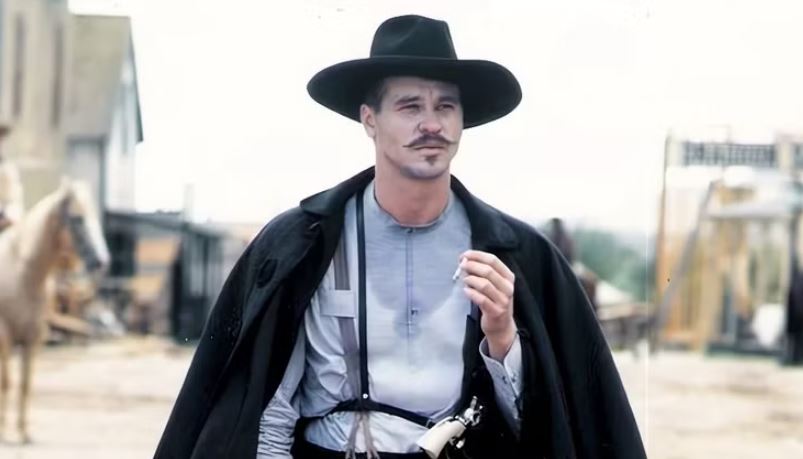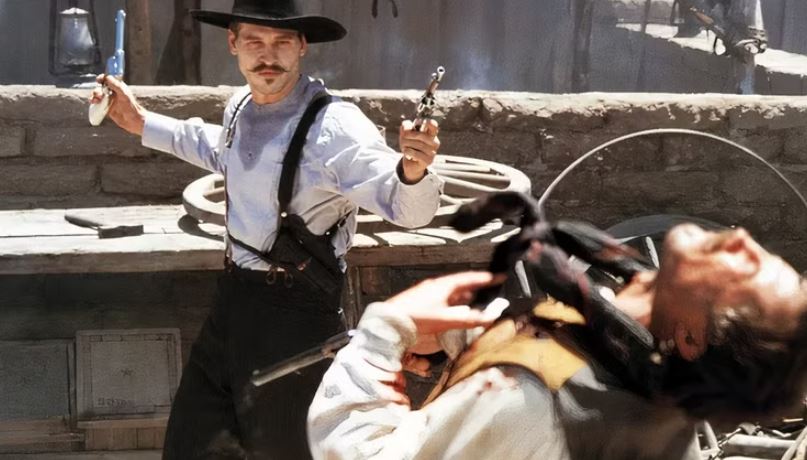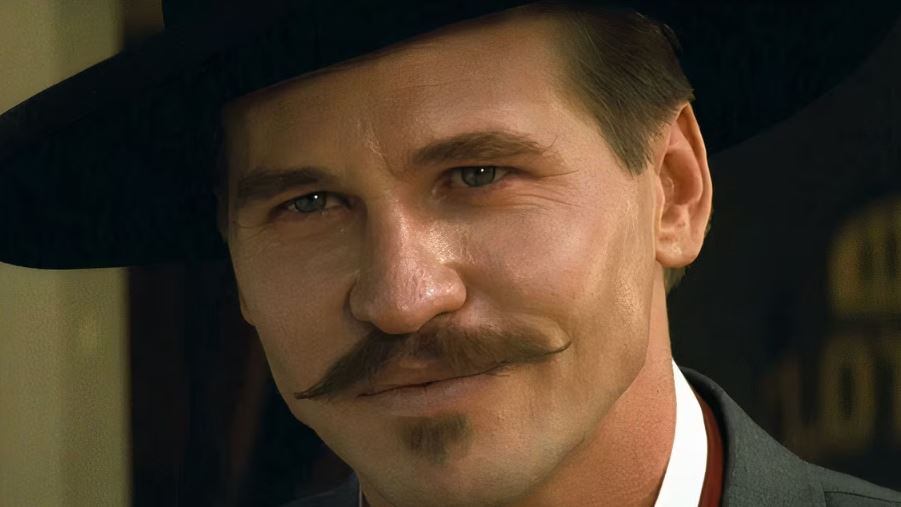George Cosmatos and Kurt Russell’s Tombstone is a masterpiece in every sense. Not a moment is wasted; everything serves a purpose. Where other films insert “patter” or downtime, Tombstone only deepens the audience’s connection to its world. It’s impossible to watch the movie without becoming engrossed in the mythos of the Wild West. So, it shouldn’t be surprising to learn that one of its climactic gunfights is packed with amazing details.
The showdown between Johnny Ringo (Michael Biehn) and Doc Holliday (Val Kilmer) perfectly illustrates how Tombstone deftly manipulates its world. Even the tiniest details make a big difference; nothing is coincidental. Holliday’s final triumph is the ultimate culmination of his character. Audiences may be more interested in the gunplay, but the details are no less astounding. Holliday’s steady aim and cool demeanor are just part of the puzzle, as the entire conflict embodies the man’s oft-overlooked intelligence.
Who Was Doc Holliday?

One must examine the life of Doc Holliday to truly understand Tombstone’s brilliance. He is, of course, a deified symbol of the Wild West, and his influence stretches far beyond Cosmatos and Russell’s film. Val Kilmer may be the most well-known iteration of the legendary figure, but he’s far from the only actor to portray the man. Harvey Clark portrayed one of the earliest silver screen visions of Holliday in 1937’s Law for Tombstone. Adam West took a few cracks at the role in Lawman and Sugarfoot. But who was Doc Holliday?
As far as historians can tell, Tombstone is one of the more accurate portrayals of the lionized figure. Born John Henry Holliday on August 14, 1851, Holliday’s life was as short and violent as Cosmatos and Russell’s film suggests. And, yes, he really died of tuberculosis in 1887. Crucially, Tombstone adds that essential layer of upright stoicism to Holliday. While some works portray him as an affable but ruthless gunslinger, the O. K. Corral gunfight was just a part of his life. As his name suggests, Holliday was an upper-crust dentist before he became a sharpshooter. In fact, he received his degree when he was 20, a year before it could be legally recognized.
Tombstone delved even deeper into Holliday’s personal life by accurately portraying the depth of his education and aristocratic background. Holliday received a classical education at Valdosta Institute. The well-rounded tutelage instructed him on everything from grammar and rhetoric to Greek, French, and Latin. In fewer words, it’s safe to say that Doc Holliday was a well-read man.
Doc Holliday and Johnny Ringo’s Showdown
It’s that intelligence that shines so brightly in Tombstone’s vision of Holliday and Ringo’s showdown. On the surface, it’s little more than the standard face-off. Two men meet, both bearing grudges, and one man survives. But there’s a small twist: After shooting Ringo in the head, Holliday holsters his gun.
The simple action gives Holliday’s opponent plenty of time to retaliate. There are approximately 20 seconds of downtime between Holliday’s shot and Ringo’s collapse. For some, it’s a seemingly massive lapse in judgment. Holliday was a skilled gunslinger; he knew better than to give his opponent a chance to shoot back.
So, by all logical estimates, Holliday would never have lowered his weapon. But this seemingly egregious plot hole is just another part of Tombstone’s brilliance. In Holliday’s time, a dentist dealt with more than oral health. They served alongside barbers as the era’s general practitioners. Thus, Holliday had essential knowledge of the human body, crucially including the brain.

Why the Johnny Ringo Fight Is So Brilliant
Watch the gunfight again. Holliday shoots Ringo in the left side of the head. It’s a seemingly irrelevant detail, but there are critical anatomical implications. Each half of the human brain controls the opposite side of the body. The right side controls the left, and, critically, the left side pilots the right.
Shortly after Holliday lowers his gun, Ringo manages to fire a single shot. It misses. Holliday knew it would miss, too. After all, Ringo was right-handed. A shot to the left side of his brain instantly destroyed the outlaw’s neural pathways, rending his “active” side useless. While it’s debatable if Holliday would have had the wherewithal to have known this at that instant, his knowledge of the topic is undeniable. His premature “surrender” is little more than another badge of brilliance.
Now, for the sake of transparency, it’s entirely possible that Holliday’s shot could have missed its mark. Despite its fragility, the brain is a remarkably flexible organ. However, Holliday’s shot was a classic “bullseye.” A frontal shot to Ringo’s head would easily tear through the large frontal lobe, the part of the brain responsible for movement and spatial awareness. The immediate stroke-like effects would be — and, as shown in Tombstone, are — unsurprisingly devastating.
